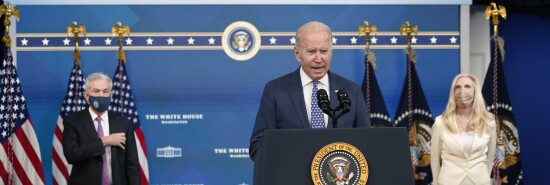
Inflation, going in the right direction, is still twice as high as the Fed’s target
Tiana Lowe Doescher
Video Embed
For the final consumer price index print we will get this year, the Bureau of Labor Statistics found that headline CPI inflation rose 3.1% for the 12 months ending in November. The Federal Reserve‘s preferred measure of core CPI, which excludes the more volatile measures of food and energy prices, rose 4% for the year ending in November.
Futures soared on the news, which showed inflation largely in line with market expectations. It is true that the Fed has made ample progress in bringing inflation down from its near double-digit high in the summer of last year, and for now, at least, the central bank has been validated in holding the federal funds rate at the 5.25% to 5.5% range.
BIDEN LOSING YOUNG VOTERS TO TRUMP AS HE FALLS BEHIND IN TWO SWING STATES
But as usual, investors are high on their own supply. While the Fed is tentatively winning its war against inflation, only an idiot could argue that it has already been won.
The 4% core CPI number is exactly double the Fed’s maximum inflation target of 2%. Core PCE, another preferred measure used by the Fed, came in at 3.5% for the 12 months ending in October, slightly better than the core CPI number but still much too high. Dig deeper into the basket of goods that comprise the consumer price index, and you’ll see why the next stage of the fight against inflation may require even more resolve from Fed Chairman Jerome Powell and company.
“Flexible-price” CPI — that is, the third of the CPI basket composed of goods and services that tend to fluctuate more quickly — is actually down 0.3% for the year ending in October, per the Federal Reserve Bank of Atlanta. But “sticky-price” CPI, which includes those two-thirds of items with more stubborn prices, is actually up 4.9% for the year ending in October.
CLICK HERE TO READ MORE FROM THE WASHINGTON EXAMINER
Hence, the Fed’s “higher for longer” strategy. As I wrote in this week’s magazine column, Powell has made clear he wants to follow the model of former Fed Chairman Paul Volcker and not his incompetent predecessors. That means keeping stable interest rates at the cost of cutting them to what both the stock market and bond markets wish.
For the Fed, the final CPI report of the year is a validation that it can stay the course. But it is no sign the war is won, and investors would be fools to believe otherwise.
